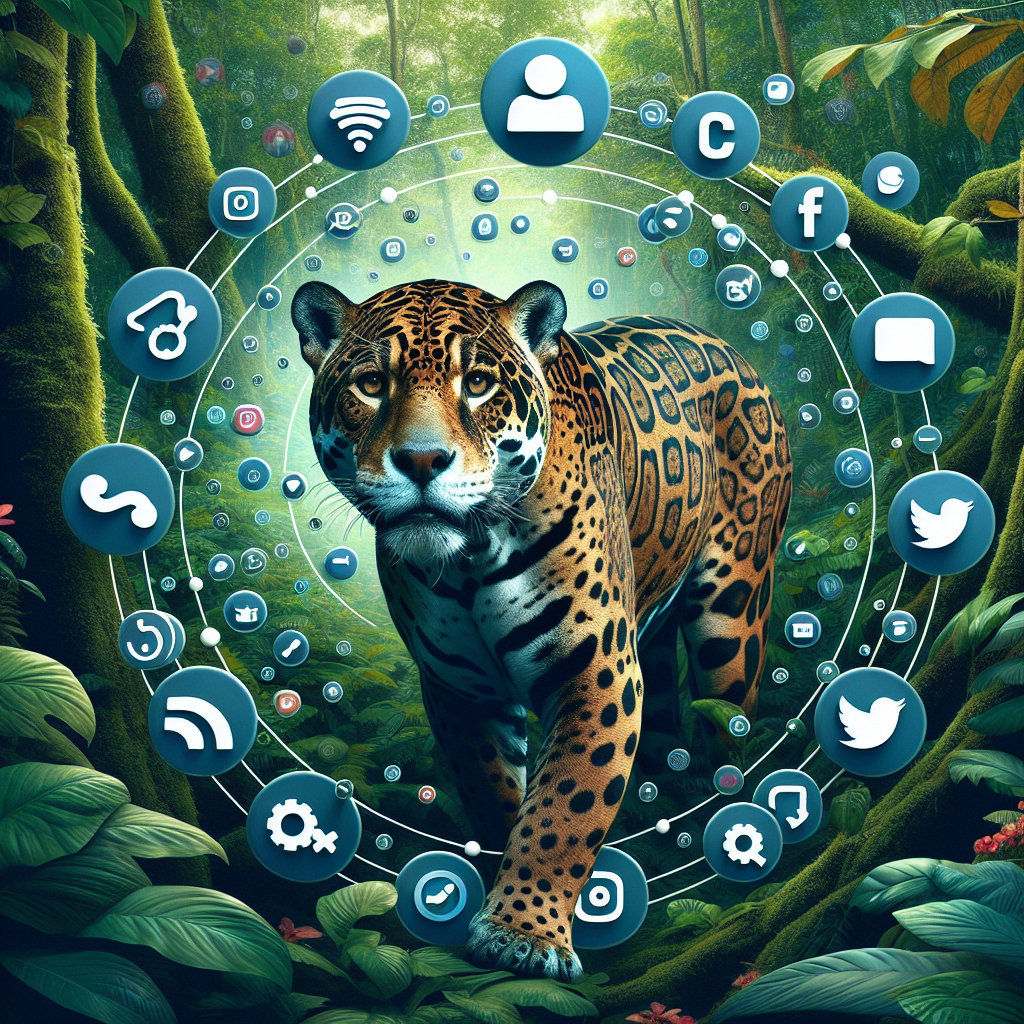Understanding Jaguar Conservation
The jaguar (Panthera onca) is one of the most elusive and powerful big cats in the world, playing an important role in maintaining the health of the ecosystems in which they reside. Found primarily in the Americas, jaguars are key apex predators, helping to control populations of other species and promoting biodiversity. Unfortunately, due to habitat loss, poaching, and human-wildlife conflict, their numbers have dwindled dramatically. Protecting this majestic species requires innovative approaches, and social media has emerged as a powerful tool in conservation efforts.
The Role of Social Media in Conservation
Social media platforms serve as a bridge, connecting conservationists, activists, and the general public. Their expansive reach allows for raising awareness, mobilizing communities, and obtaining funding. By harnessing the power of social media, organizations focused on jaguar protection can leverage several key strategies to amplify their efforts.
Creating Awareness and Education
Education is fundamental to conservation. Social media enables organizations to disseminate information quickly and effectively. Engaging posts with visually appealing images of jaguars can capture attention, while infographics detailing their plight can inform followers about the species’ status and the importance of conservation.
- Platforms to Utilize: Instagram and Pinterest excel in visual storytelling, while Facebook and Twitter offer robust platforms for sharing educational content and articles.
- Hashtags: Popular and targeted hashtags such as #SaveTheJaguars, #JaguarConservation, and #WildlifeProtection can help spread awareness and facilitate online discussions.
Storytelling
Storytelling is one of the most effective methods of engagement on social media. By sharing personal stories of researchers, local communities, or even individual endangered jaguars, organizations can create emotional bonds between their audience and the species.
- Video Content: Short documentaries or testimonials from on-ground conservationists can be powerful. For instance, videos showcasing fieldwork can provide insight into the challenges faced when working to protect these animals.
- User-Generated Content: Encouraging followers to share their experiences or photos while observing jaguars can foster a community feeling and enhance engagement.
Engaging the Community
Being active on social media allows conservationists to create a sense of community among followers, supporters, and stakeholders. Engaging with your audience can take many forms:
- Polls and Quizzes: Interactive content such as polls about jaguary behavior or quizzes about their habitats can involve your audience and make them feel part of the conservation mission.
- Live Q&A Sessions: Hosting live sessions on platforms like Instagram Live or Facebook Live with conservation experts allows followers to ask questions directly and gain deeper insights into jaguar protection efforts.
Fundraising through Social Media
One of the significant challenges of conservation work is securing funding. Social media platforms can help bridge the funding gap.
- Crowdfunding Campaigns: Platforms like GoFundMe or Kickstarter can be promoted across social media channels, encouraging donations. Using compelling visuals and concise messaging about the necessity of funding can yield great results.
- Partnerships: Collaborating with influencers or businesses with a passion for wildlife conservation can provide broader outreach and raise funds directly through co-hosted events or campaigns.
Utilizing Influencer Partnerships
Influencer marketing has seen significant growth in recent years, providing a unique opportunity for conservation organizations to reach new audiences.
- Choosing the Right Influencers: Collaborating with wildlife photographers, eco-friendly brands, or activists who resonate with the values of jaguar conservation can boost visibility.
- Content Collaboration: Influencers can create targeted campaigns that not only promote jaguar protection but also raise awareness about specific issues such as habitat loss or illegal hunting practices.
Building Partnerships with Local Communities
It’s crucial to recognize that the communities living in proximity to jaguar habitats often have the most significant impact on their well-being. Social media can be used to engage these communities effectively.
- Highlighting Local Voices: Share stories from indigenous groups or local farmers about their experiences and challenges with jaguars. This can foster a connection between those directly affected by wildlife management strategies and conservation efforts.
- Crowdsourcing Solutions: Using social media to solicit ideas from local communities can lead to innovative conservation solutions and foster a sense of ownership in protecting local wildlife.
Monitoring and Transparency
Transparency in conservation efforts is critical to building trust and maintaining public support.
- Live Updates: Regularly updating followers about ongoing conservation projects or research initiatives can keep the audience informed and engaged.
- Success Stories: Share milestones or success stories that outline the positive impact of conservation efforts, showcasing the difference donations and public engagement make in real-time.
The Use of Data Analytics
Analyzing the engagement and reach of posts can help organizations refine their strategies for social media outreach.
- Understanding Audience Behavior: Platforms like Facebook and Instagram provide analytics tools to assess which types of content resonate best with followers.
- Targeting Content: By understanding audience demographics and preferences, organizations can tailor their content to elicit more significant responses and engagement.
Advocacy and Policy Changes
Social media can also serve as a platform for advocacy and lobbying for policy changes that benefit jaguars.
- Petition Drives: Utilize social media campaigns to encourage followers to sign petitions aimed at legislative changes that protect jaguar habitats and enforce stricter anti-poaching laws.
- Awareness Campaigns: Share information about upcoming policy discussions or local government meetings where conservation issues are on the agenda, urging followers to participate or voice their concerns.
Fighting Misinformation
In the age of information overload, misinformation can be a significant hurdle for conservationists.
- Fact-Checking Content: Organizations should prioritize creating accurate, fact-checked content that counters common misconceptions or myths about jaguars and their habitats.
- Educational Infographics: Visual aids summarizing facts and debunking myths can be shared widely, enabling followers to spread accurate information within their own circles.
Conclusion
The vast landscape of social media presents unmatched opportunities and resources for jaguar protection initiatives. By focusing on awareness, community engagement, storytelling, influencer partnerships, and utilizing data analytics, conservation organizations can maximize their impact. This concerted effort can unite individuals from all backgrounds in a shared goal—to safeguard the future of the jaguar and the ecosystems they inhabit.







